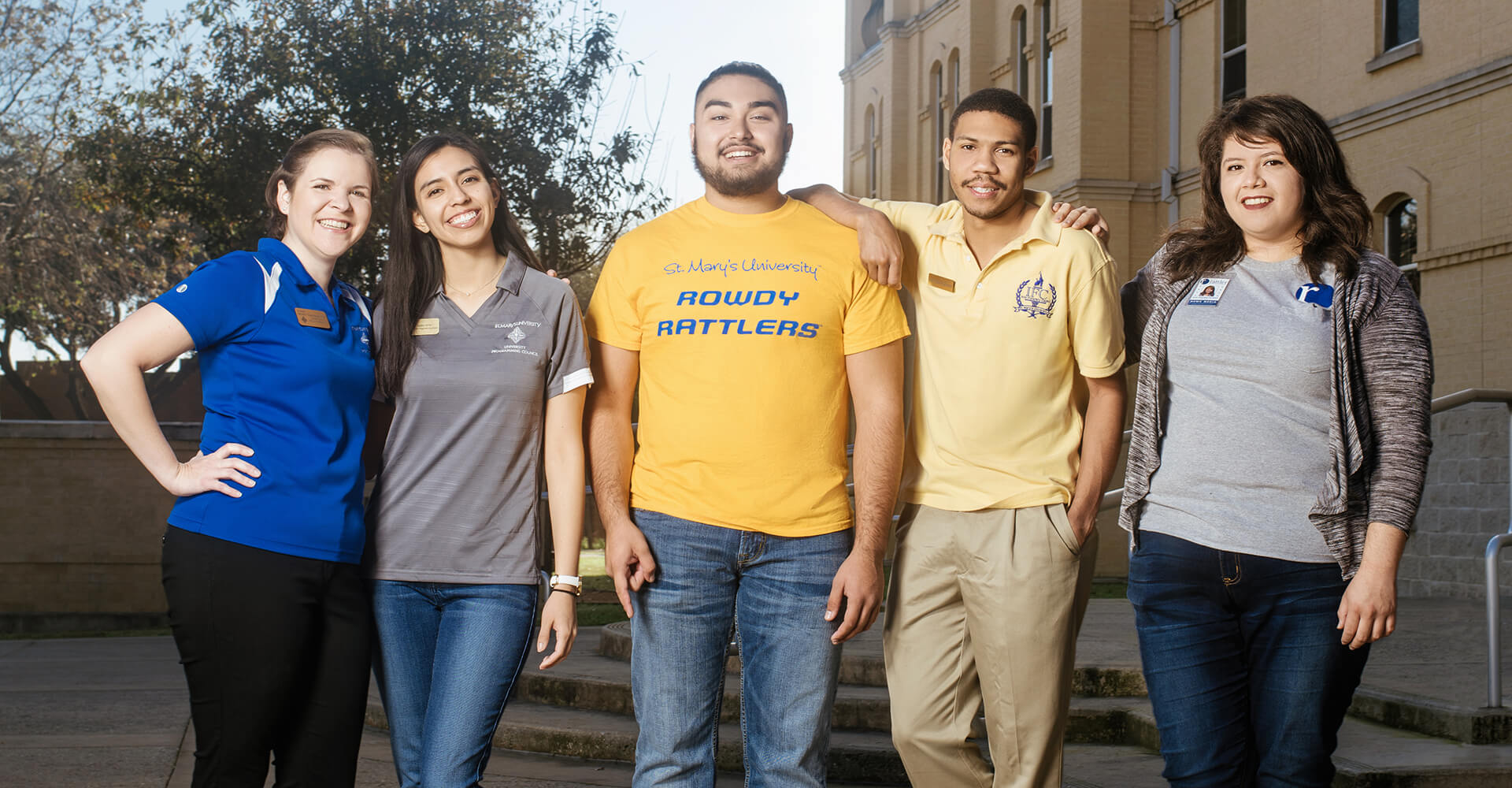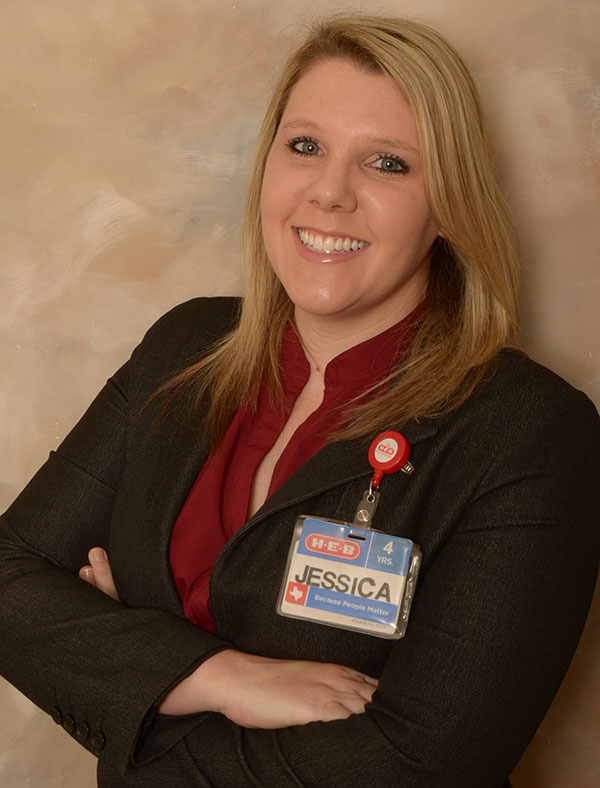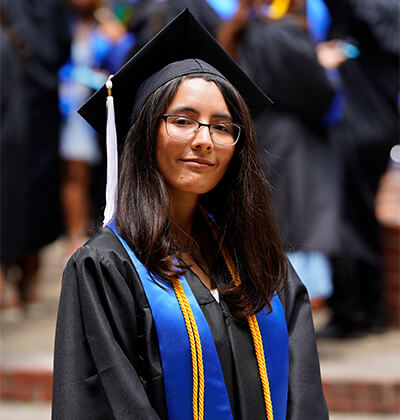Living on campus is a big part of the unique community spirit of St. Mary’s, and the University plans to continue enhancing residence life.
by Alex Z. Salinas (B.A. ’11)
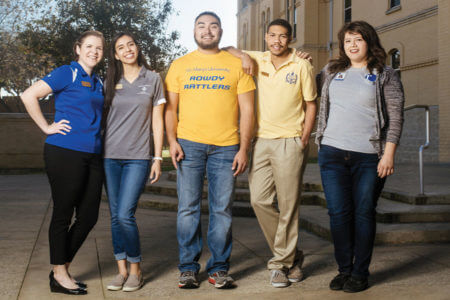
When Leslie Ortiz was deciding where to go to college, the El Paso native was certain she’d be off to a fashion design school. But she didn’t figure on St. Mary’s coming into the picture.
“I have an older cousin who studied at St. Mary’s, and she told me I should consider going there, that I’d love it there,” Ortiz said.
Two years later, the sophomore Marketing major couldn’t imagine being anywhere else.
“Since coming here, I’ve redefined my personal mission statement. I’ve met amazing people, I’ve become part of a community,” Ortiz said. “And I get to study the business side of what I want to do, but with a human touch that St. Mary’s specializes in.”
It’s this human touch — the mentoring nature of St. Mary’s faculty and staff — as well as its tight-knit community that have long been the University’s primary selling points, said Thomas Mengler, J.D., St. Mary’s University President.
Community, especially in the residence halls, Mengler said, instills in students a sense of spirit to do good in the world. The community — students and graduates will tell you — is what makes St. Mary’s St. Mary’s.
“Because of our Marianist Charism, we believe that ‘community’ plays an important part in the growth of our men and women,” said Mengler, as the University prepares to significantly expand and improve its residence hall options over the coming years.
“For our residents, who are crucial to our community, the excellence of the University is directly tied to the excellence of its facilities,” he said.
The Founders Revival
It’s 1982. Ronald Reagan is president of the United States, and Wall Street is experiencing an economic boom. At St. Mary’s, Lourdes Hall is built. It’s the campus’ first new residence hall in 13 years.
Shortly after Lourdes opens, construction begins in the southwest corner of campus, which will bring an influx of new residence halls. The area becomes colloquially known as The Outback. The first of the six Outback halls, Anthony Frederick, comes in 1984. The last, Herbert and John G. Leies, debuts in 2000.
Unlike older residence halls on campus, these were built with shorter lifespans — about 30 years — as a cost-efficient way to meet the demands of a growing student population. Now, they are aging, and their amenities are out of touch with the expectations of today’s students, said Tim Bessler, Ed.D., Vice Provost for Student Development and Dean of Students.
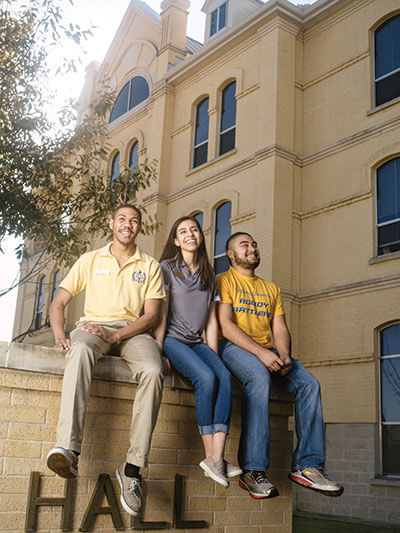
Fast forward to fall 2009, when St. Mary’s pushed its housing game into the future.
First, the completion of Founders Hall, a three-story building for incoming freshmen, brought the first new residence hall to campus in nearly a decade. It featured a main lobby, plenty of common areas and two-person, suite-style rooms.
As expected, students love living in Founders.
“Founders demonstrated that an updated residential facility is an attractive option when it comes to students’ decisions to live on campus,” Bessler said.
“Living on campus is probably one of the greatest experiences you can get in college,” said Paige Gandara-Valderas, a senior Art Education major who lived in Founders as a freshman. “Our hall director and resident assistants did a great job of having floor activity plans, and that’s how a lot of us got to know each other.”
Because she lived on campus, Gandara-Valderas became more engaged in student life. She went on to serve as a resident assistant (RA), a campus programming planner and, now, editor-in-chief of the student newspaper, The Rattler. And she still lives on campus.
“As editor-in-chief, I spend a lot of time in the newsroom, and I’ve found it easy to go from the newsroom to my room to class,” Gandara-Valderas said. “Living on campus opens a lot of doors for you.”
It also opened the door to many of her friendships, including one of her best friends, senior Political Science major Alexa Leal.
“I noticed that Paige would be on The Outback benches drawing these awesome caricatures of people,” Leal said. “So one day, I walked up to her and asked her to draw me.”
And their friendship took off.
Leal, who’s from the Rio Grande Valley, said that being on campus her first few years was crucial to her personal development and healing after her father died her freshman year.
“I got a lot of help from the community, the RAs and friends like Paige, who would check in on me. I had a lot of positive distractions that year and built relationships with people I wouldn’t have met if I wasn’t living on campus,” she said.
The Living-Learning Communities
In 2009, St. Mary’s launched its first Living-Learning Community (LLC) — the Science Living Community in Marian Hall.
LLCs are academic- or interest-themed living communities for students with similar majors or interests. Today, there are seven more LLCs: Biology, Political Science, Psychology, the Honors Program, the Marianist Leadership Program, Rowdy Rattlers athletics fans, and health and wellness enthusiasts.

“Living here so long and seeing the same faces here that I see in class has made taking classes easier, especially the tougher ones,” said Megan Medrano, senior Biology major. “There’s always someone available to help with homework or give advice on what to expect from certain professors.”
Charity Bowen-Miller, assistant director of Residence Life, oversees the LLCs and said they have become an important driver of students’ academic success.
“With students who study and go to class together, and now with upperclassmen mentors who remain in the LLCs to live with freshmen, there is so much positive cultivation going on,” Bowen-Miller said. “Plus, our faculty and staff have bought into the concept. Their participation has been crucial to their success.”
For instance, Winston Erevelles, Ph.D., Dean of the School of Science, Engineering and Technology, cooks dinner for residents in Marian Hall once a semester. The dinners allow Erevelles to get to know students — and to show off his mean kitchen skills with favorite dishes from his native South India.
“The food is simply an enabler to hang out and spend a few hours with our students, getting to know them and their interests and concerns,” Erevelles said.
Start of a New Era
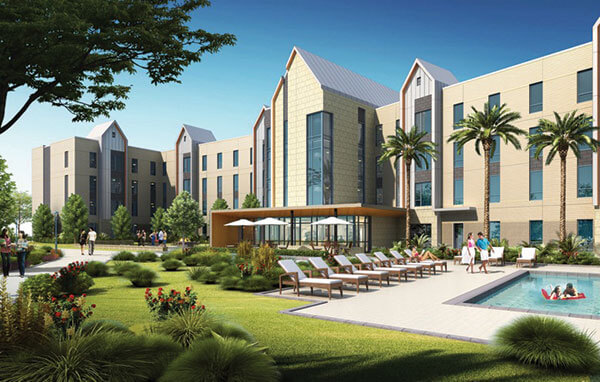
Remember this name: The Village at St. Mary’s.
It is the new name for the area previously known as The Outback. However, the new name refers to all halls south of Rattler Drive, including Founders, Dougherty and Lourdes. The heart of it will be a contemporary living community that will eventually replace those seven aging residence halls in several phases. The first phase is construction of a 232-bed, suite-style hall, which will open this fall to juniors and seniors.
Before the start of the next phase, which will be construction of another residence hall, and all future phases, the University will gather feedback to ensure the halls meet the needs of students and their families.
In all, four phases will unfurl during the next 15 years, and the remaining current residence halls will be renovated.
One of the main reasons St. Mary’s is investing in this new housing vision is to encourage upperclassmen to live on campus.
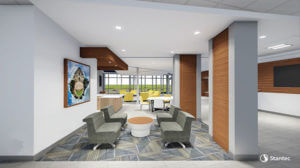
“Some of the most important learning for students comes from their peers,” Mengler said. “Juniors and seniors are the leaders of our student body, so having more of them on campus will promote peer support and mentoring.”
Dorothy (Alvarado) Hemphill (B.A. ’06) was a freshman living on campus when the terrorist attacks of Sept. 11, 2001, occurred. The emotional and spiritual support she felt on campus that day has become a part of her memories of the tragedy and how she and fellow students dealt with it.
Hemphill recalled that classes were canceled and the community — faculty, staff, students and Marianists — joined together in prayer.
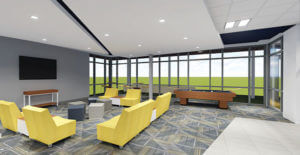
“The ability to walk to Guadalupe Chapel with my fellow students to find some sort of answer helped to make that day easier. The Marianists played a major role in my life while I was a student,” Hemphill said.
It’s this spirit of community that has remained embedded in the memories of those who have come and gone at St. Mary’s.
“Being involved spiritually is a lot easier when you are living on campus,” said Jean-Claude Prudhomme, a senior double-major in Accounting and Finance. “I have classes all day throughout the week, so being able to take a break and go to Mass on Sunday evening is very convenient.”
Fun is Part of It, Too
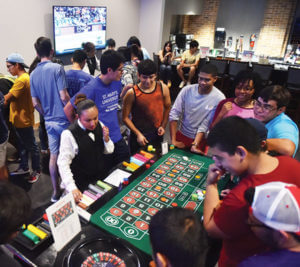
“All of our students are here to get an education,” Mengler said, “but as a Catholic and Marianist university, the development of the human person is important for us.
“Fortunately, fun is a big part of that.”
Those at St. Mary’s from the early 1970s to the late 1980s will remember the old pub, a place where students could chat with professors and socialize with classmates. In many ways, the pub was the social hub of campus, where stories were told, laughs shared and young romance blossomed.
With the spirit of the old pub in mind, The Pub at St. Mary’s opened in 2015, on the rear veranda of the Blume Library, with a goal of reinvigorating campus life.
Jenni Kraft-Batchelder, assistant director of Student Activities and Transition Programs, coordinates many events at The Pub, from cupcake building and live music performances to presidential debate watches and trivia nights.
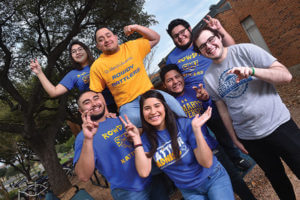
“In 2015, we completed 109 programs. That’s 109 programs that didn’t exist the year before. Our hope is that they give life to the campus and give students, especially residents who don’t have a car, something to do,” she said.
Prudhomme said The Pub, as well as the Cotrell Learning Commons, which opened on the ground floor of the Blume Library in 2012, are important to “developing a social life, those soft skills required in the outside world.”
And when the social hubs close for the night, life continues in the residence halls.
“I lived in Dougherty my first two years, and some of my best friends came from there,” Prudhomme said. “Whether it was hanging out in the lounges, playing pool or doing homework, we made it our own little community, and those interactions led to me getting involved in other things — it’s that whole idea of positive peer influence.”
Added Value
In fall 2016, 59 percent of all St. Mary’s residents were sophomores, juniors and seniors. With the coming of new residential facilities, the hope is that more of these upperclassmen will remain on campus past their freshman year.
“Staying on campus means easier access to resources, including mentoring and advising, and a greater chance that the student will feel a sense of belonging, of being connected to the University,” said Leticia Hart, director of Retention and Graduation Initiatives. “Historically, there tends to be a higher retention rate among residents versus commuters.”
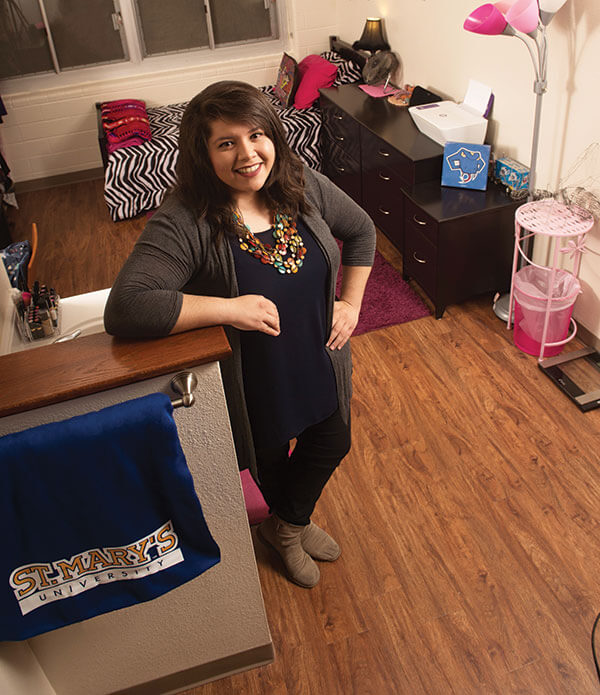
This doesn’t mean the University has left commuter students out of the equation. Hart said that with a new commuter peer mentor program started in fall 2016, commuting freshmen are paired with commuting sophomores and juniors to ensure they succeed from an academic and personal standpoint.
But, Hart added, living off campus does mean missing out on a fundamental part of the college experience.
“Living on campus means you’re part of a community that’s beyond academics. It’s an opportunity to expand your friendships and, with that, your world views,” she said.
It’s for these reasons — the mentoring and development of the whole person — that St. Mary’s is investing in the future of its residence halls and in its residents.
Starting in fall 2017, the University will require students from outside Bexar County to live on campus for their freshman and sophomore years. Villarreal said the requirement will help students transition into college and adulthood more easily.
President Mengler agrees: “A student who lives on campus is more engaged with the University, and that engagement means more focus on his or her studies. Engagement is what defines the goodness, the culture and the deep sense of community found at St. Mary’s University.”
Prudhomme echoed Mengler’s words on what has drawn people — for more than 100 years — to St. Mary’s.
“Community is the biggest selling point of the school,” he said. “That’s what people come here for: that Catholic feeling of, ‘I’ve done something good for the community’ — that feeling of, ‘I’m an individual, not a number.’ “

